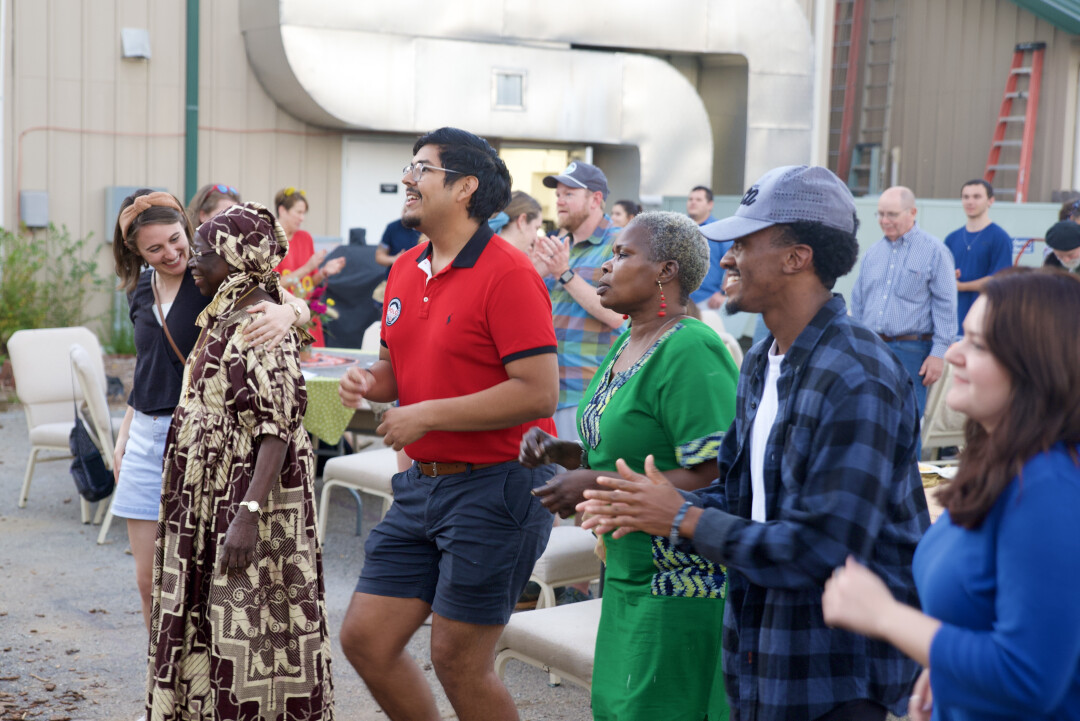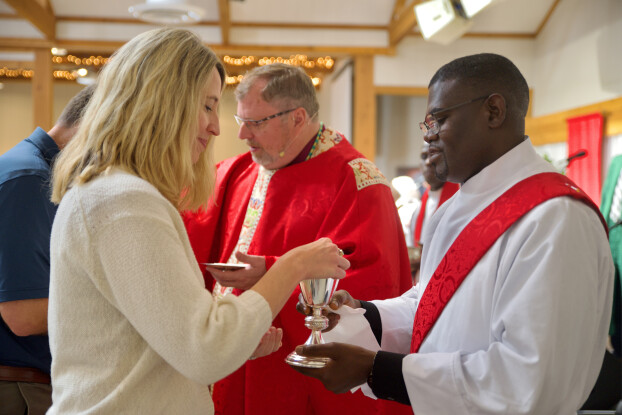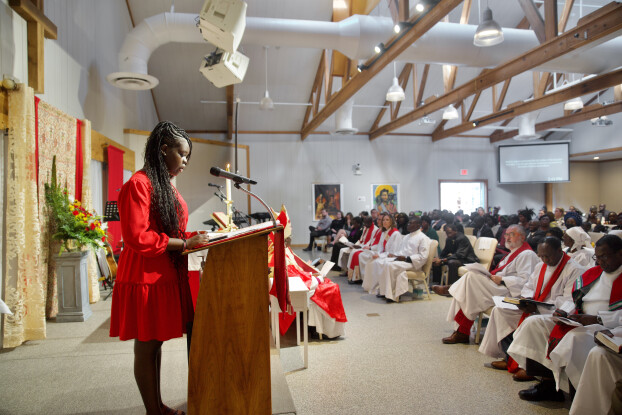
God’s blessings as we begin this season of Advent!
This month, I turn to a visit at Church of the Redeemer-Greensboro. Everywhere I encountered people – from the stories of confirmands (“What drew you to this church?”), to casual conversations and comments (“Why are you thankful for this church?”), to a formal Q&A with volunteer and staff clergy (“What do you think is particularly significant about Redeemer?”), one answer emerged: “Redeemer is a truly diverse church. I love the solid, biblical teaching and the warm welcome, but what sets it apart is that it reflects the church in heaven (Rev. 7:9)!”
Indeed, it proved true: Over the weekend, I had dinner with a Sudanese vestry member, confirmed a couple from Burundi, preached at Arabic and Swahili-Kinyarwanda congregations, had lunch with Chilean, Sudanese, and Congolese clergy who serve in the church, and was merrily interrupted during Saturday’s confirmation class by an almost entirely African American team setting up for Sunday activities.
Diversity is a longing of many churches in Christ Our Hope, but at this point we appeal to a narrower demographic than the church in heaven. Redeemer is an exception. From the outside, it would be easy to think the key is its resources. It is a larger church with an expansive campus and diverse talent pool. It staffs programs that appeal to needs and interests across a broad spectrum of ages, cultural, and socio-educational backgrounds. People who value diversity, who are themselves “diverse,” are drawn to a place where they feel like they fit. Diversity increases diversity.
If that were the whole story, it could easily discourage other churches. But when I asked, “What enabled Redeemer to become diverse?” I heard some courses of action doable and scalable for any church:
-
Build a solid theological basis for biblical diversity. Teach the vision of the church in eternity and how the Gospel advanced into new nations and ethnic groups. Make clear the consistent picture of God’s view of humanity:
-
“He has made of one blood every nation of mankind to live on all the face of the earth” (Acts 17:26).
-
“Here there is not Greek and Jew, circumcised and uncircumcised, barbarian, Scythian, slave, free, but Christ is all and in all” (Col 3:11).
-
Philip the Evangelist took the Gospel to Samaria, then to the Ethiopians, then up the coast of Palestine, through Gaza, and settled in Caesarea Maritima, the major winter port in the eastern Mediterranean. He planted a church and must have encountered and evangelized sailors from every imaginable Mediterranean people group.
-
Race – the loaded political term in our country – is not a biblical construct. God speaks of nations, tribes, and people-groups – differences in geography, culture, language, history – but says nothing about the physical characteristics we so strongly associate with “race.” God had it right long before science acknowledged that what we call “race” has no genetic, biological reality. There is one human race, regardless of superficial differences.
-


-
Stay with the Basics
-
Resist the call to “pursue diversity” as a “cool idea” or “politically correct (or socially desirable) goal.” Instead, pursue people created in the image of God. Delight in the gifts people bring and the beauty of the cultures they represent.
-
Be free to admit - and repent of - ways Christians have acted unjustly based on a racial construct counter to the way God sees humanity.
-
Diversity is a profound and far-reaching outcome of living into God’s view of humanity and God’s plan for his church. Learn and tell the better story!
-
Open doors to welcome and work with leaders and residents from different tribes, tongues, and nations.
-
Pray for, support, and empower people who have passion and gifts to minister to and with different tribes, tongues, and nations.
-


So how did Redeemer begin this journey?
-
“Diversity” was not the direct goal. A church reflective of the church in eternity was a prayer, a desire, and focused effort. To that end . . .
-
The leadership of the church recruited clergy from different nations, languages, and cultures to serve and develop congregations at Redeemer.
-
They gave space to different immigrant groups for worship according to their cultural, linguistic identities. Then they began to integrate them into the life of the church.
-
Choirs from East African communities serve in different Redeemer services.
-
Immigrant clergy meet with the rest of the staff.
-
Associate Priest Rev. Jared Wenzel, passionate for unity between congregations at Redeemer, is assigned to spearhead ways for connecting the various national and cultural expressions.
-
The youth ministry mixes children and youth from different nationalities into one English-speaking group. Involvement in Camp Booyah and mixed-nationality small groups are high values.
-
-
They emphasized the roots of our diocese in the Church of Rwanda and actively share a multi-faceted ministry partnership with the Diocese of Gahini (Rwanda).
-
They serve the poor through their farm and free produce programs. Leaders go out of their way to welcome and pray with whoever shows up on campus.
Is this easy? By no means! The changes at Redeemer are a twelve-year development process requiring perseverance, creative thinking, faithful scriptural teaching, and prayer.
Redeemer has experienced a tipping point in terms of becoming a church that reflects heaven. It would be easy to say, “We can never get there.” But God can write his own beautiful story of a biblically diverse church in your community.
To learn more, contact Rev. Jared Wensyel.
Servus servorum Dei,
Bishop Steve
